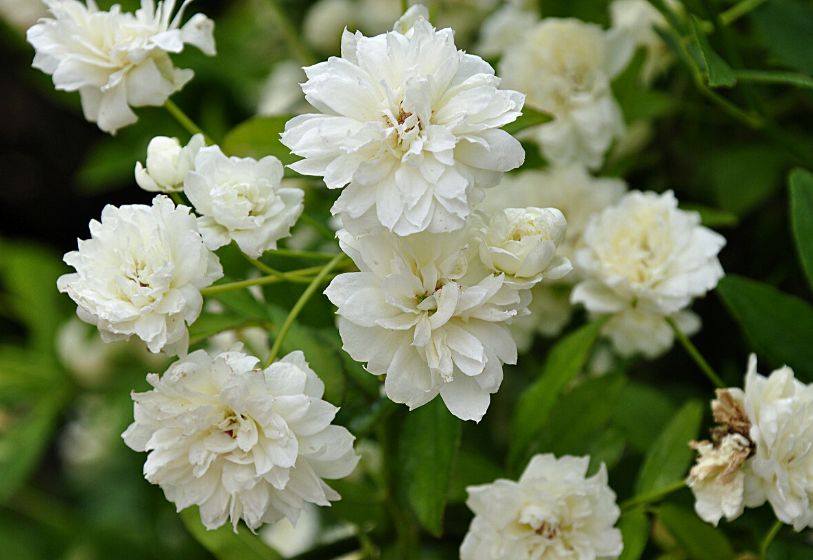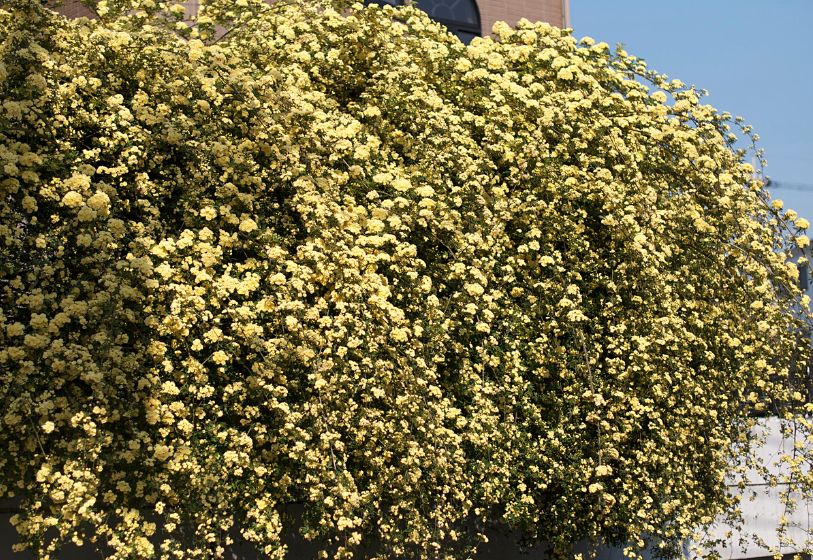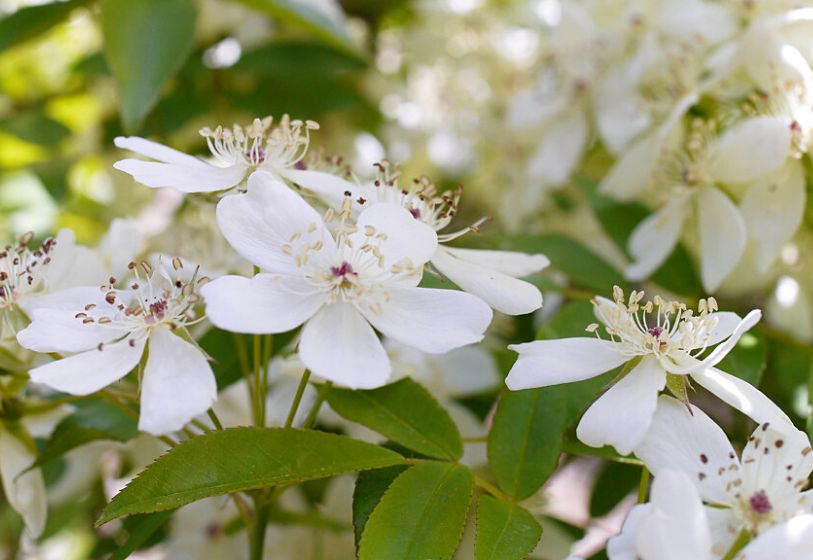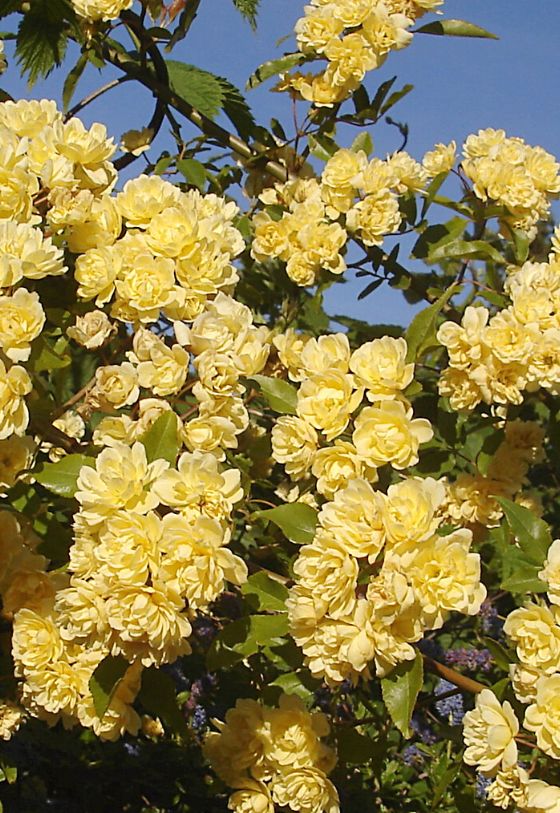Lady Banks’ Rose is a vigorous climbing shrub celebrated worldwide for its enchanting yellow flowers and thornless branches. Native to the western regions of China, specifically in provinces like Gansu, Guizhou, Henan, Hubei, Jiangsu, Sichuan, and Yunnan, this rose thrives in forests, thickets, valleys, stream banks, and roadsides, typically found at altitudes ranging from 500 to 2200 meters (1,640 to 7,220 feet). Its introduction to Europe is credited to William Kerr, who embarked on a plant-collecting expedition for Sir Joseph Banks.

Lady Banks’ Rose had been cultivated in China for centuries. In 1807, William Kerr acquired a cutting from the renowned Fa Tee nursery (now in Liwan District, Guangzhou). The English name “Lady Banks’ Rose” is a tribute to Dorothy Hugessen, Sir Joseph’s wife. The species Rosa banksiae was first described by William Townsend Aiton in the book Hortus Kewensis in 1811.
Distinguishing itself from other rose varieties, Lady Banks’ Rose exhibits greater vigor and speed in growth, reaching an average height of 20 feet (approximately 6 meters), which can easily be surpassed. A remarkable example of this rose can be found in Tombstone, Arizona, where it covers the roofs and pergolas of an inn, spreading across an incredible 840 square meters (about 8,998 square feet), earning it the title of the world’s largest rose plant.
Another remarkable feature of Lady Banks’ Rose is its nearly absence of thorns, which are small (around 5mm or roughly 0.2 inches) and are only present on the most vigorous and thick branches. With a profusion of arching, reddish-brown branches, this rose emits a sense of elegance. Its evergreen leaves are compound, consisting of three to five coriaceous leaflets that are oval to elliptical in shape, pointed at the tip, with serrated edges and prominent veins.

In early spring, Lady Banks’ Rose produces inflorescences in the form of umbels or corymbs, carrying numerous small flowers that can be white, cream, or yellow, with single or double corollas depending on the variety. The variety R. banksiae var. normalis, the wild type, showcases single white flowers with stamens and more thorns. On the other hand, R. banksiae var. banksiae, improved by Chinese breeders, boasts fewer thorns and double flowers with petals replacing the stamens.
The most popular cultivars of R. banksiae var. banksiae are ‘Alba Plena’, known for its white flowers, and ‘Lutea’, with charming yellow blossoms. The fragrance of the Lady Banks’ Rose’s flowers resembles that of violets (genus Viola), although care must be taken not to confuse it with African violets. The pseudofruit is orange or black-brown, globular or ovoid, smooth, and adorned with deciduous sepals.
In landscaping, Lady Banks’ Rose thrives in spacious gardens, estates, parks, and similar settings. Its vigorous and seemingly wild growth makes it less suitable for delicate trellises and arbors. As a climber, it’s best supported by pergolas, large arbors, trees, gazebos, sturdy walls, embankments, fences, and robust roofs. With proper support during its initial phases, it can even be trained into a small tree.
Its long, arching branches cascade and drape over its supports, adorned with numerous flowers once a year. Most gardeners adore their Lady Banks’ Rose plants but find themselves needing to prune them to prevent them from overtaking everything. While it can be grown in pots, it won’t achieve the same vitality as plants rooted directly in the ground.

It thrives in full sun or partial shade, in fertile, well-draining, deep soil enriched with organic matter. Young plants are sensitive to intense cold, frost, or snow, but larger plants will regenerate after harsh weather. Similarly, while it appreciates regular watering in its early years, it becomes drought-tolerant over time. Low-maintenance Lady Banks’ Rose is suitable for both novice and forgetful gardeners, although managing its growth through pruning immediately after flowering is important. Propagation can be achieved through cuttings and grafting.

